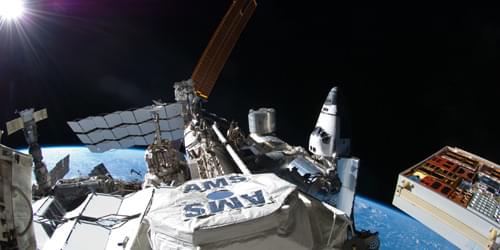The spectrum of cosmic-ray antiprotons has been measured for a full solar cycle, which may allow a better understanding of the sources and transport mechanisms of these high-energy particles.
The heliosphere is a region of space extending approximately 122 astronomical units (au) from the Sun (1 au being the average distance between the Sun and Earth). This volume mostly contains plasma originating from the Sun but also various charged particles with higher energies. These particles can be categorized according to their energies and origins: Lower-energy solar energetic particles, for instance, come from the Sun itself, while Jovian electrons have their origin in the magnetosphere of Jupiter. Another such population comes from outside the Solar System: galactic cosmic rays (GCRs), which mostly consist of protons and electrons and their antiparticles and span a vast range of energies from mega-electron-volts to exa-electron-volts [1]. Astonishingly, energies at the high end of this range would correspond to a single particle carrying as much kinetic energy as a well-thrown baseball.
